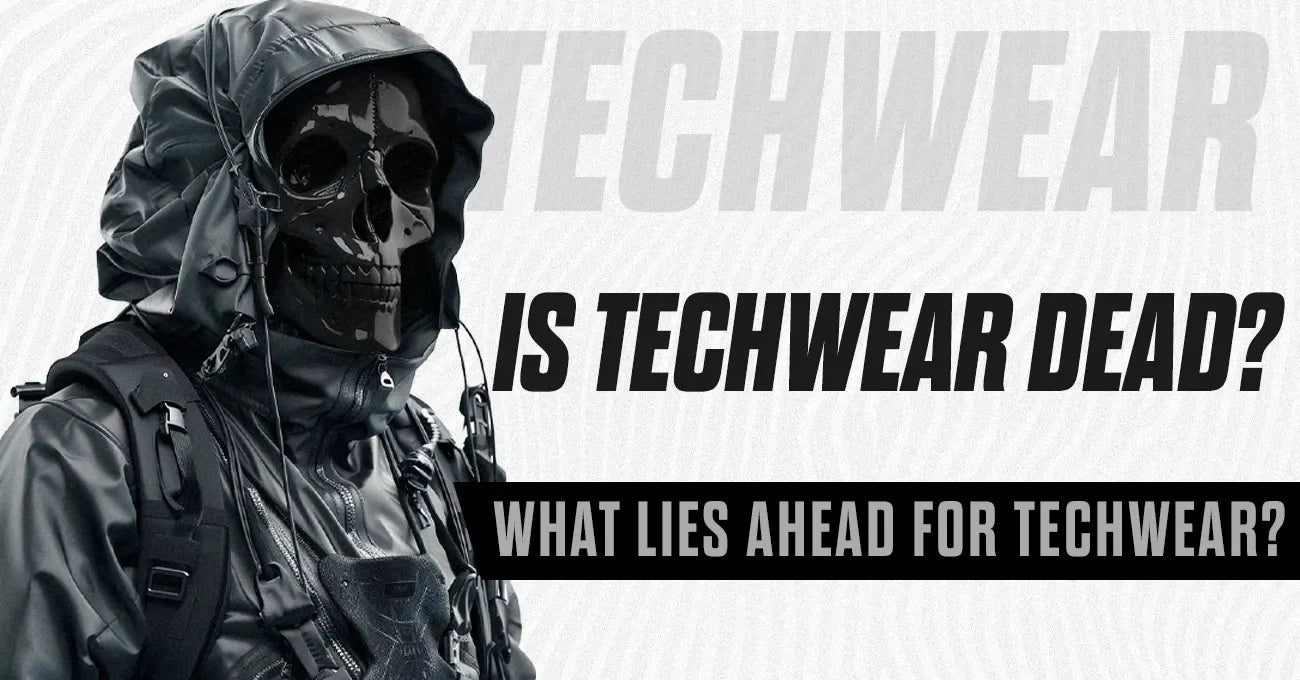
Is Techwear Dead?
Is techwear becoming a relic of the past, or does it continue to redefine the boundaries of functional urban fashion?
From a point where it was hailed as the future of duds fit for the modern metropolis to a point that it even had outstripped the promise of mere garments: techwear, with its potent blend of leading-edge materials and futuristic aesthetics, had once seemed poised.
The Essence of Techwear
Techwear is a category of clothing style that fuses high-performance materials with versatile functionality and a special urban style. The garment is engineered with the main aim of providing wearers protection from the environment, comfort, and efficiency, along with avant-garde futurism that can be classified as relating to the general concept called "dystopian futurism."
All of this makes the techwear: weatherproof fabrics, expandable pockets, and modular attachments, bringing everything together to bring style with meaning into the clothes. Ultimately, techwear promises to convert the everyday garment into a gadget without letting the aesthetic value it carries down.
Techwear's Position in Evolving Fashion Trends
With each wave of trending fashion, techwear comes under a question: is this considered as slowly going out of style, or is this adaptation to the new environment full of other challenges?
We will explore:
- The Genesis and Ascension of Techwear: How did techwear rise from niche subcultures to mainstream fashion?
- Techwear’s Golden Era: What innovations and designs defined its success?
- Signs of Decline?: Is the market showing fatigue, and are consumers moving on?
- The State of Techwear Today: How do current sales and trends reflect its popularity?
- Future Projections and Revival Strategies: What can be done to rejuvenate or redefine techwear for the next generation?
The Genesis and Ascension of Techwear
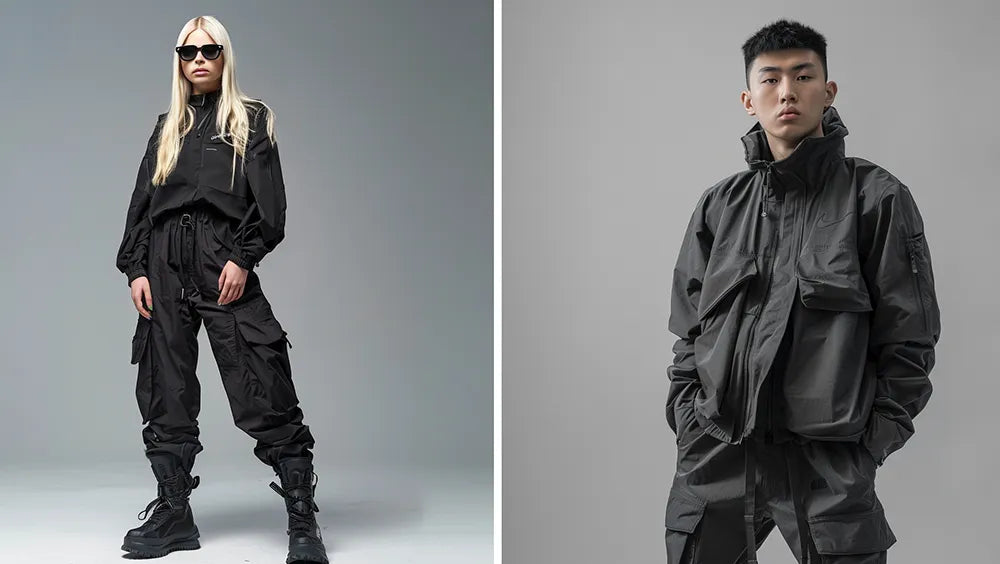
While often associated with the new fusion of technology and clothing, techwear has its roots as much in the practical as it does in the stylish. The origins of techwear seem to be intermingled both within the urban environment and military equipment, inspiring clothes to give functionality and mobility in dynamic environments.
Origins of Techwear
The birth of techwear, on an abstract level, is strictly tied to the evolution of material and clothing for military, sportswear and outdoor activity. Specifically, in its technical aspects, techwear has been influenced by the necessities of the military toward durable, waterproof, and multifunctional clothing.
These suits had to be thought out to resist extreme conditions while assuring mobility and comfort, hence the birth of new fabrics, such as Gore-Tex and nylon. As this carried on, and such materials became more accessible, they paved the way for techwear in urban life settings, where similar daily wear demanded the same functional attributes.
Cultural Rise of Techwear
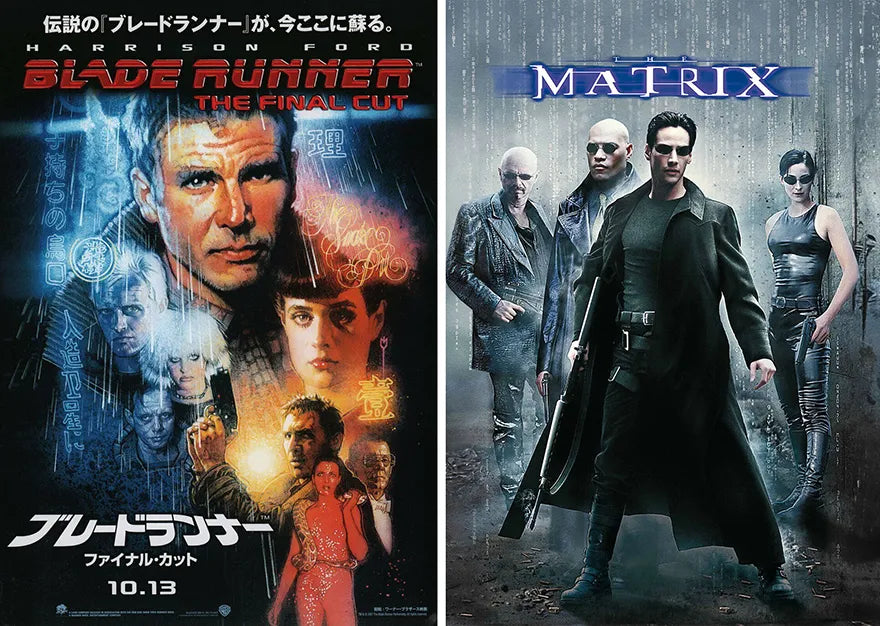
As modern media and films like "Blade Runner" and "The Matrix" showcased characters in dystopian futures garbed in clothing that resembled today's techwear—fusing high functionality with a high-tech urban aesthetic—it helped seed the style into popular culture.
This further popularization came about through influencers and fashion icons of the day adopting and showcasing these futuristic looks. Social networks played a considerable role, with communities and amateurs sharing, discussing, and developing techwear aesthetics, making them accessible to a large audience globally.
Influence of Brands on Techwear
Several key brands have been instrumental in shaping and pushing the style of techwear.
ACRONYM, headed by Errolson Hugh, is often highlighted for pioneering the techwear look that coordinates high-tech materials and design with urban smarts.
Nike ACG (All Conditions Gear) has brought techwear to a broader market by merging functionality with fashion appeal suitable for both athletes and urban commuters.
Stone Island has had a significant impact by providing garments that are visually striking and highly functional—applying the techwear aesthetic through innovative materials and dyes, establishing techwear as an aspirational, desirable style.
Integration of Techwear in Fashion

Gradually but firmly, techwear has inched its way into mainstream fashion. High fashion designers have begun incorporating techwear’s functional elements into their collections, recognizing a consumer interest in garments that offer more than just aesthetic value.
This inclusion in regular fashion shows and urban fashion weeks indicates the acceptance and reception of this avant-garde movement within the broad spectrum of the fashion industry. The move towards functional, versatile clothing aligns with broader changes in consumer values: sustainability, durability, and wearability.
From its functional roots to its cultural ascension, techwear has evolved from niche military-inspired gear to a significant style movement within urban fashion. "Function to fashion only" defines its special relationship very well with the world, making a clear show of its ability to resonate fluidly with changes in the world while maintaining a balance between the real and the flair.
Techwear's Golden Era
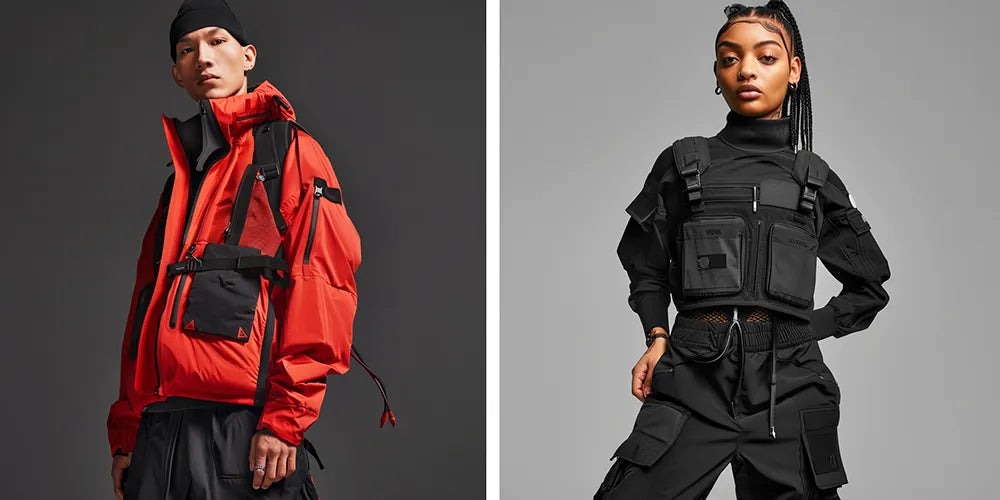
The golden age of techwear marks a period of colossal expansion and innovation, brought up from sub-cultural roots to reshape mainstream views on urban clothing. This era saw techwear ascend to its peak popularity, driven by cutting-edge innovations and a vibrant community that thrived and progressed its culture.
Peak Popularity of Techwear
The peak of techwear's popularity can be traced back to the mid-2010s when consumer behaviors and expectations were significantly influenced by the merging of technology and lifestyle. Sales figures and fashion industry reports from this time indicate a substantial increase in demand for techwear products.
Brands like ACRONYM saw rapid growth, with new market entrants looking to capitalize on the trend. The aesthetic appeal of techwear, promising high functionality, resonated with a demographic that valued practicality alongside avant-garde design.
Fashion influencers and celebrities were frequently seen in techwear, enhancing its allure and visibility. This period also witnessed techwear's increasing presence across social media, streetwear blogs, and fashion magazines, marking its full emergence into the cultural zeitgeist.
Innovations and Key Pieces in Techwear
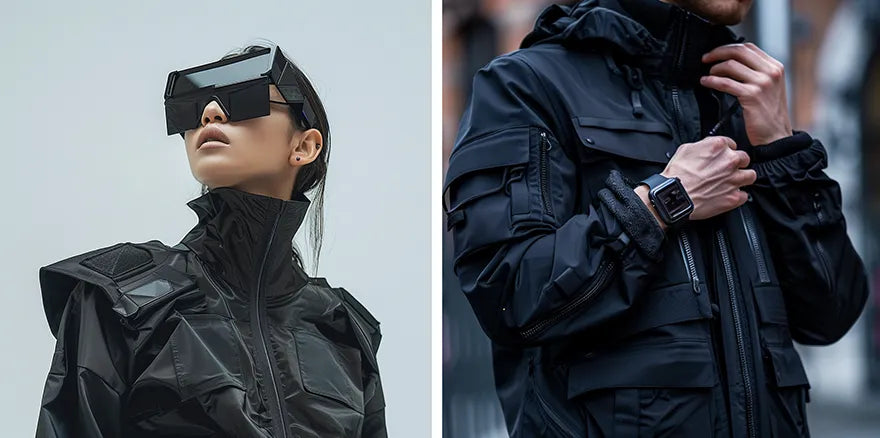
The core innovations of techwear are centered around material science and functional design. Waterproof, breathable fabrics like Gore-Tex became staples, offering weather protection without sacrificing comfort.
These material innovations allowed designers to create garments suitable for various climatic conditions, enhancing daily comfort for wearers.
Another significant advancement was the development of modular accessories, introducing a level of customization previously unseen in conventional clothing. Features like detachable pouches, built-in gadget compartments, and adjustable straps allowed wearers to tailor their outfits to specific needs.
Key items that became symbols of techwear include tactical vests, cargo pants with integrated webbing, and multifunctional outerwear with numerous hidden compartments and ergonomic designs. These items were celebrated not just for their aesthetic appeal but for their practical utility, becoming icons of the techwear style.
Community and Culture of Techwear
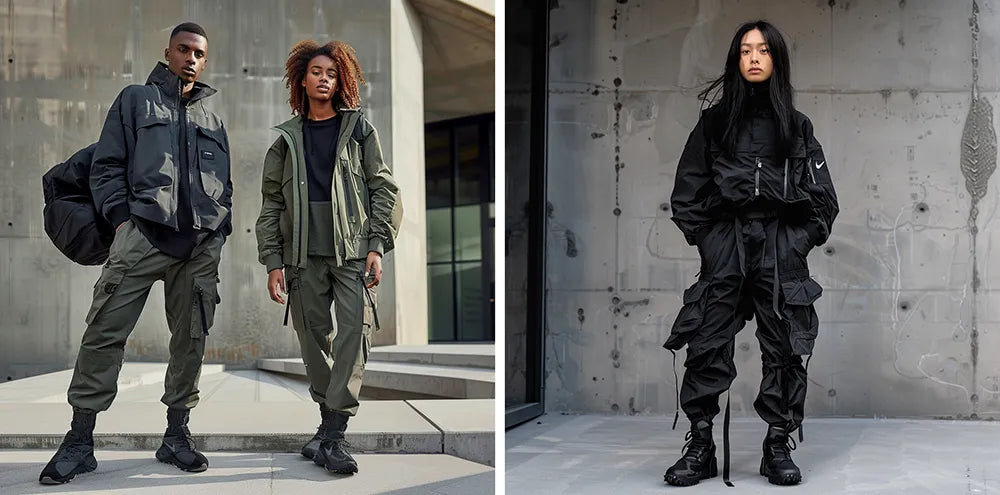
Techwear's golden era was not just about the clothing but also about the community and culture that developed from it. Forums and social media groups sprang up, providing spaces for enthusiasts to share outfit ideas, discuss new releases, and exchange garment care tips.
The community was marked by a deep appreciation for both the technical aspects of the clothing and the lifestyle it represented, which emphasized futuristic urban mobility and readiness.
From local meetups to global online discussions, the techwear community fostered a sense of belonging that transformed techwear from a mere fashion choice into a lifestyle.
Many events showcased the DIY spirit prevalent in the techwear scene, with enthusiasts modifying and tailoring their gear to fit personal needs and tastes, further cementing techwear’s status as a highly personalized and community-driven style.
Thus, the golden era of techwear describes a time of intense innovation and community commitment. Advancements in materials and design, combined with an enthusiastic subculture, propelled techwear to become one of the most significant and enduring forces within the world of fashion.
Signs of Decline?
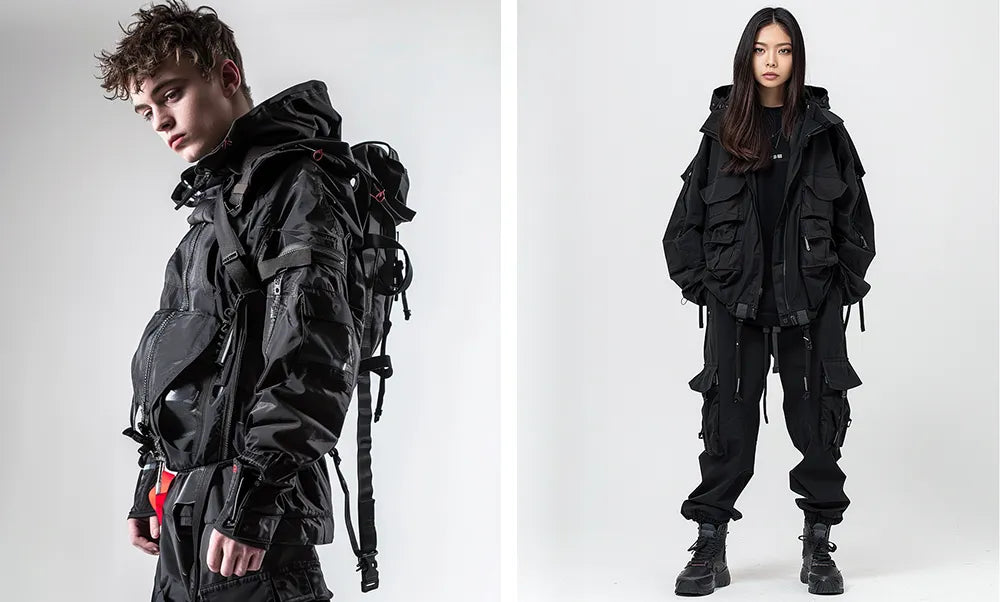
Like any other fashion trend approaching its zenith of popularity, techwear is reaching its critical moments of scrutiny.
Questions arise:
- Is the market finally approaching oversaturation?
- Are consumer taste profiles trending away from techwear's functional aesthetic?
- What are industry insiders saying about its future?
This section addresses these concerns, exploring signals that could indicate a decline or transformation within the techwear landscape.
Market Saturation Concerns
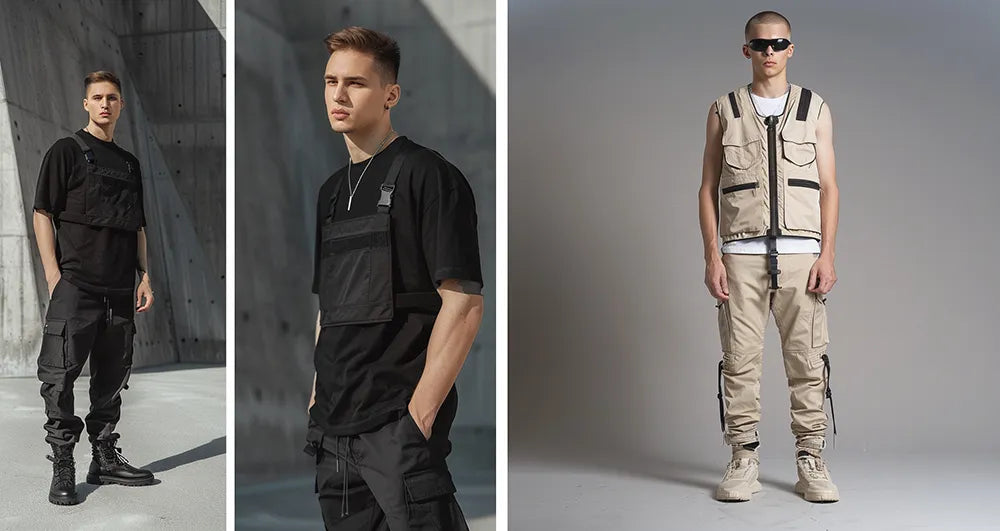
The rapid growth of techwear has attracted significant attention and investment, leading to a ballooning number of new brands entering the market, all aiming to capture the trend-seeking consumer.
This influx raises questions about market saturation: has the abundance of techwear options watered down the uniqueness that once defined this niche? Retail data and market trends indicate an increase in offerings, providing consumers with more choices but potentially resulting in reduced perceived value and uniqueness of individual brands.
Some brands struggle to maintain their distinctiveness in a market crowded with similar aesthetics and functionalities, which could eventually lead to consumer fatigue.
Shifts in Consumer Preferences
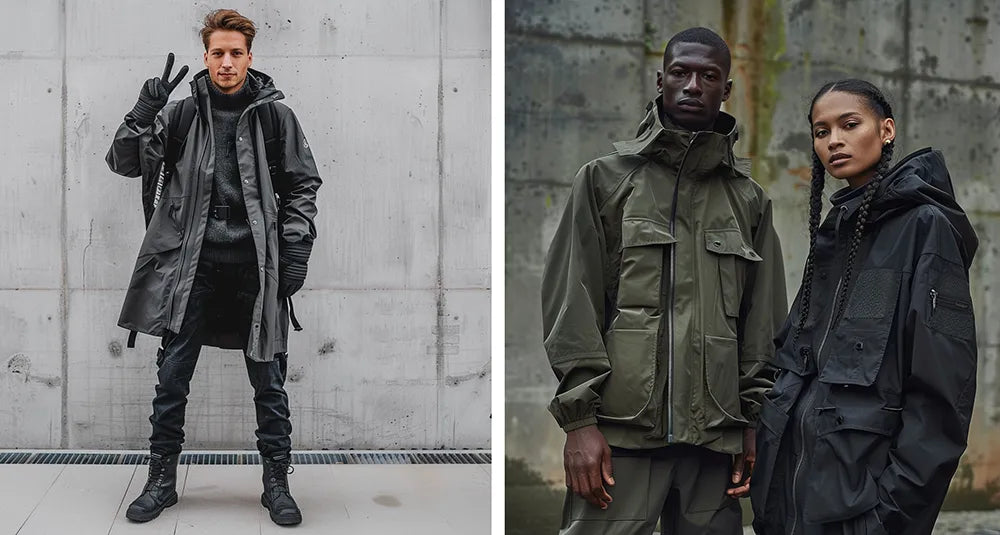
Consumer preferences are inherently dynamic, and several factors may be influencing a shift in techwear. Economic fluctuations, such as recessions or booms, significantly impact spending habits, especially in high-cost fashion categories like techwear.
Additionally, the pandemic has redefined perceptions and values around clothing; comfort and affordability have become more important than techwear's typically higher-priced items. Moreover, the cyclic nature of fashion means that what is trendy one season can become passé the next.
Techwear's heavy, layered look may be losing favor as consumers move toward minimalism and sustainability over high-tech gadgetry. Insights from interviews and surveys in leading fashion consumer reports could offer a more detailed view of these changing consumer mindsets.
Critique from Fashion Insiders
Fashion critics and insiders play a vital role in shaping the narrative around a style's relevance and longevity. Many insiders note that although techwear's peak showcased innovation, there is a growing belief that the style needs to evolve to remain relevant.
Critics argue that techwear must find new ways to integrate technology and functionality without becoming repetitive or predictable. Leading designers in the space, such as Errolson Hugh of ACRONYM, hint at new directions that might blend techwear's core principles with emerging fashion technologies, suggesting evolution rather than decline.
Furthermore, some insiders advocate for a return to techwear's roots, focusing less on overt tactical aesthetics and more on genuine technological integration in clothing, like smart fabrics that adapt to environmental and body changes, which could revitalize the genre.
The State of Techwear Today
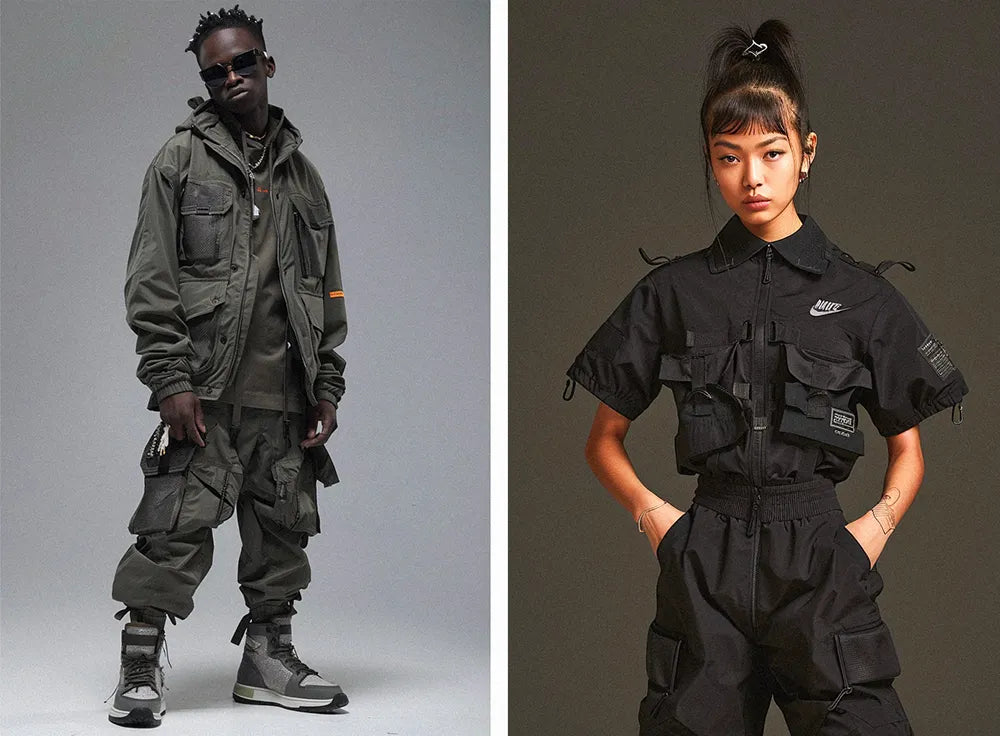
In the ever-evolving world of fashion, understanding the current state of techwear involves examining the latest market dynamics, brand strategies, and consumer sentiments. This section offers a detailed snapshot of today's techwear scene, grounded in recent data and insights from both brands and consumers.
Current Market Analysis
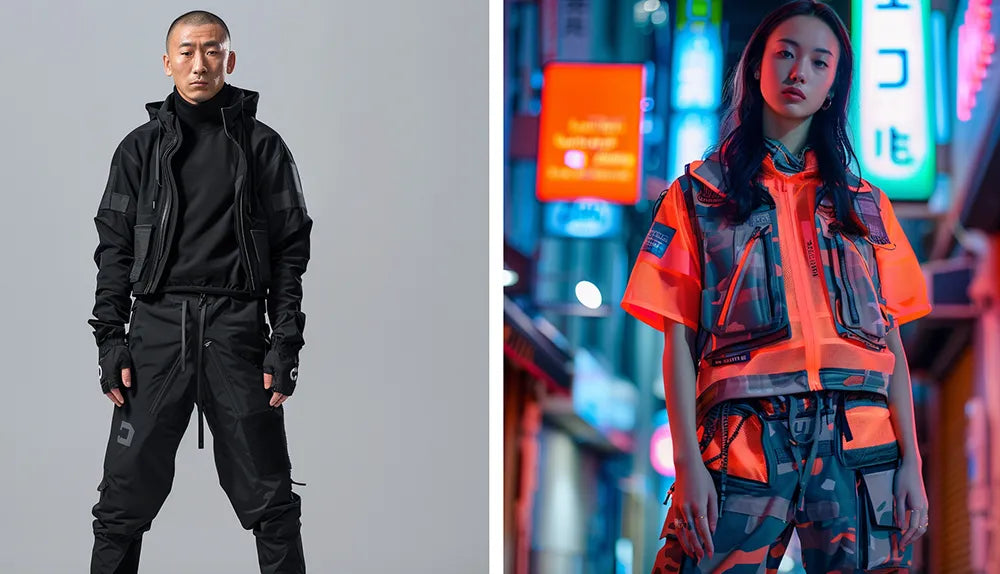
Recent sales data and market research reveal nuanced trends within the techwear segment. Despite signs of market saturation, techwear continues to maintain its unique niche within urban fashion, thanks to a dedicated consumer base that values both the aesthetic and functional aspects of the style.
The latest industry reports predict that the global market for technical apparel will continue to grow, fueled by increasing demand for garments that blend fashion with practical technology.
However, this growth is not uniform across all brands or regions. In Asia, particularly in Japan and South Korea, techwear remains highly popular, driven by continuous innovation and a cultural predilection towards futuristic fashion.
Conversely, growth in Western markets has been more tepid, suggesting shifts in consumer interest or market dynamics. This disparity underscores the importance of geographic and cultural factors in the success of techwear.
Brand Adaptations
To remain competitive, traditional techwear brands have adopted various strategies. Some have expanded their product lines to include more accessible items at lower price points, broadening their appeal beyond hardcore enthusiasts to casual consumers who appreciate elements of techwear like waterproofing or tactical aesthetics.
Others have intensified their focus on high-tech features, incorporating advanced technologies such as heat-adaptive fabrics and enhanced modularity, allowing for greater customization. Brands like ACRONYM continue to push the envelope in design and functionality, solidifying their place at the high end of the market.
However, not all adaptations have been successful. Some brands have struggled with changes that diluted their identity, leading to mixed messages and confusing consumers. The challenge remains to balance innovation with authenticity, ensuring that changes propel the brand forward without alienating its core customer base.
Consumer Insights

Feedback from techwear consumers provides crucial insights into the current perception and demand for the style. Surveys and interviews indicate that while a segment of the community remains highly engaged and loyal, newer audiences are more critical of the cost-to-value ratio, especially amid economic uncertainties like the pandemic.
Long-time fans laud the durability and functionality of techwear garments, citing prolonged use and satisfaction with their purchases. However, potential new customers often view techwear as too niche and impractical for everyday wear.
This feedback suggests that while the techwear market is stable among its devotees, its growth potential may hinge on attracting and converting new consumers by addressing these concerns.
Future Projections and Revival Strategies
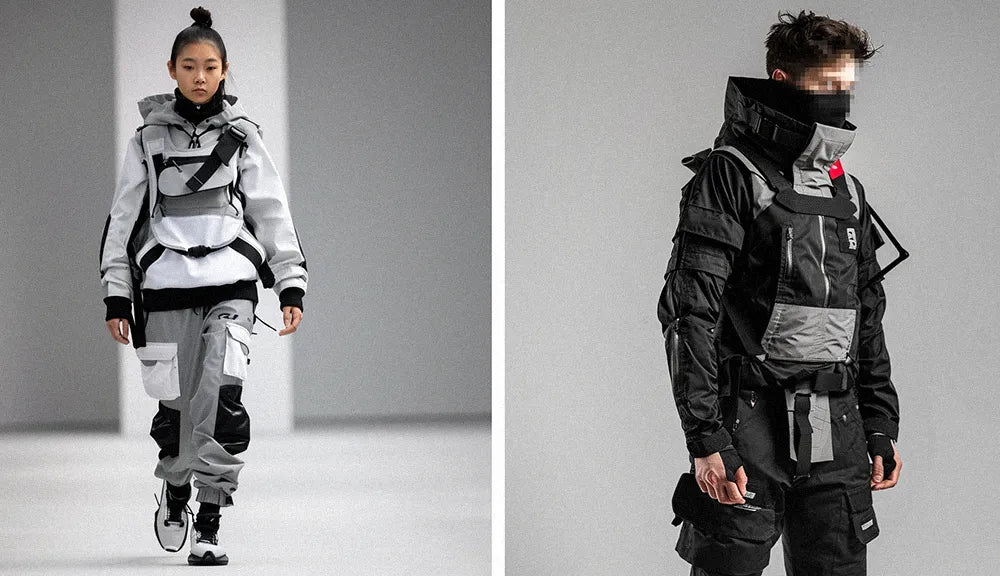
As techwear navigates through its perceived stagnation, the future holds numerous opportunities for revitalization and growth. This final section delves into emerging trends, potential technological advancements, and strategic moves that could redefine techwear, making it relevant and appealing to a broader audience.
Emerging Trends in Techwear
One of the most promising avenues for techwear's revival lies in integrating sustainability with high-tech fashion. As environmental concerns become increasingly paramount, consumers are seeking products that are both functional and environmentally friendly.
Techwear could lead this shift by adopting recycled materials and more sustainable production methods without compromising technical benefits like water resistance and durability. Brands like Patagonia are already advancing in this area, offering garments that combine eco-friendly materials with durable design, pointing the way forward for techwear.
Another trend is the blending of techwear with athleisure, where comfort meets functionality. This trend capitalizes on the growing demand for versatile clothing suitable for both exercise and everyday wear, featuring breathable, flexible fabrics equipped with techwear's characteristic utility.
This crossover appeal could attract fitness enthusiasts and urban commuters alike, expanding techwear’s market base.
Technological Advancements in Techwear
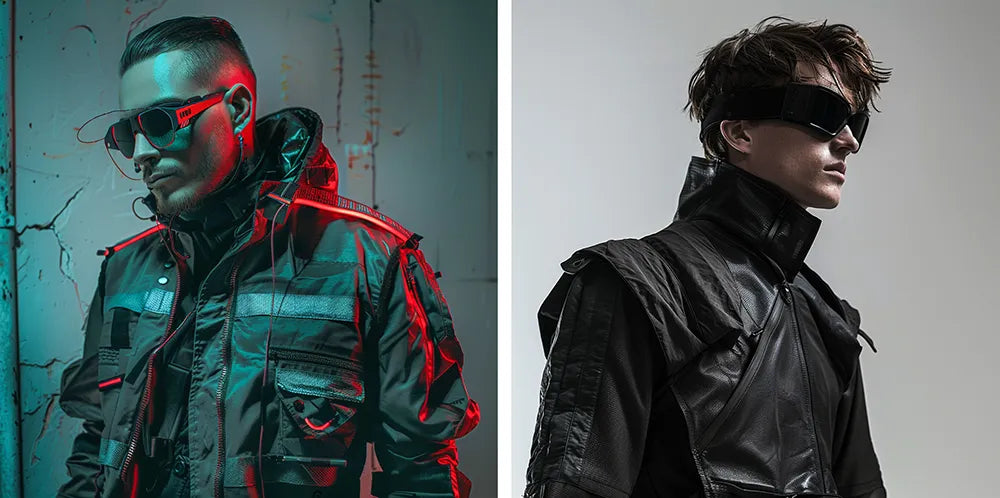
The future of techwear could be significantly shaped by advancements in smart textiles. Imagine clothing that adapts to weather conditions, changing its thermal properties based on external temperatures, or garments that integrate health monitoring tools to track fitness metrics or stress levels.
Developments in nanotechnology and wearable technology could lead to garments that can charge your mobile devices using solar power or kinetic energy, combining utility with innovation.
Further advancements may include increased modularity in clothing, allowing users to add or remove elements based on their daily needs. This could transform techwear from niche specialty apparel into a more universally appealing option, adaptable for different climates, settings, or personal preferences.
Strategies for Techwear Revival
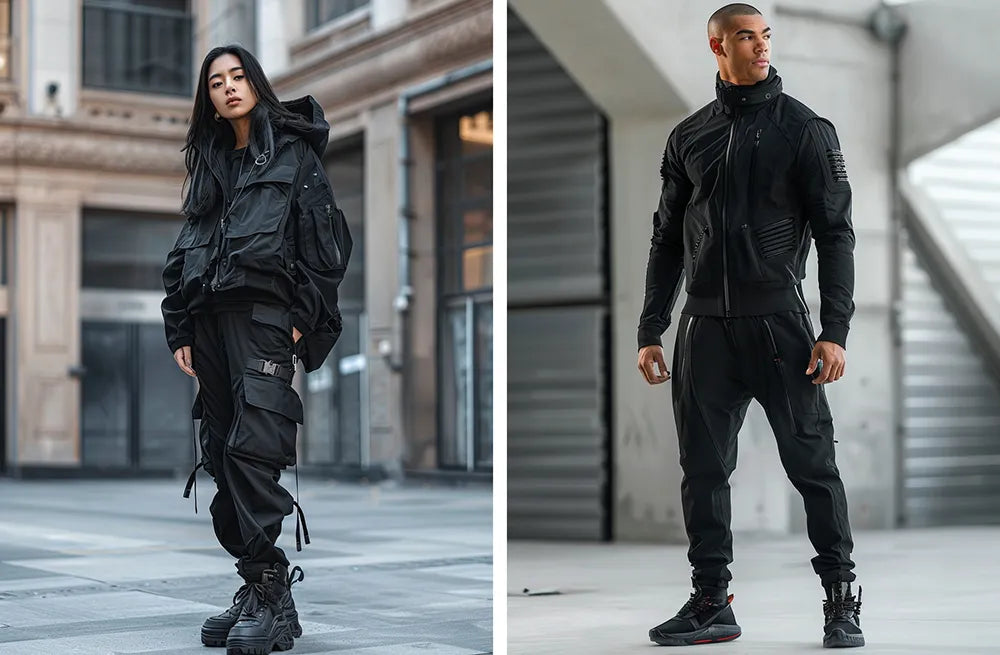
For techwear to regain its momentum, brands need to employ targeted strategies. Enhancing consumer education to showcase not just the aesthetic appeal of techwear but also its functional advantages could demystify techwear for new consumers through interactive marketing campaigns, virtual try-ons, augmented reality experiences, and detailed product demos.
Collaborations with high-profile designers or celebrities could also inject fresh excitement into techwear lines, as seen in other fashion sectors. These collaborations can bridge the gap between niche appeal and mainstream fashion, introducing techwear to new audiences in compelling ways.
Additionally, expanding into new geographic markets where techwear has not yet penetrated deeply could offer new growth opportunities. For instance, more aggressive expansion into emerging markets with burgeoning urban populations and increasing disposable incomes could open new avenues for techwear’s adoption.
Recap: The Evolutionary Journey of Techwear
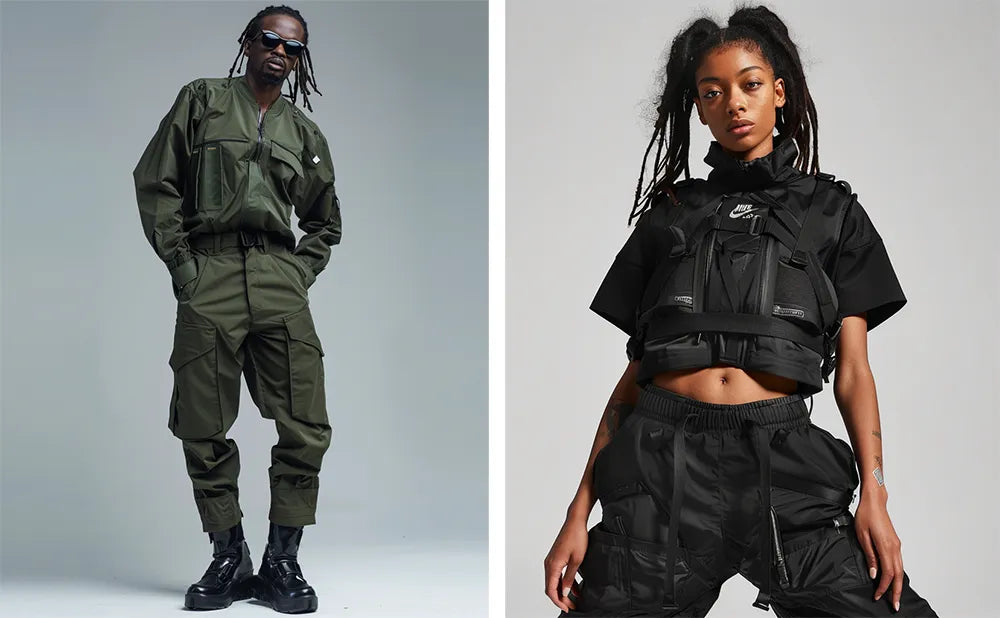
Throughout this article, we've explored the multifaceted world of techwear, from its utilitarian roots and meteoric rise in the fashion industry to signs of potential decline and the innovative strategies that could revitalize its presence. We've analyzed techwear's peak popularity, driven by groundbreaking material science and a vibrant, dedicated community, and considered whether market saturation and shifts in consumer preferences signal its demise or merely a transition.
The Resilience of Techwear
Based on the evidence presented, the question "Is Techwear Dead?" can be confidently answered with a "No." Techwear is not dead; it is merely redefining itself in response to new market realities and consumer needs. It remains a dynamic player in the fashion industry, poised for transformation rather than obsolescence. The embrace of sustainability, the use of smart textiles, and crossover with other fashion genres open doors for techwear to reinvent itself, continuing to captivate both old fans and attract new audiences.
Engaging with the Techwear Community
For those intrigued by the ongoing journey of techwear, the conversation doesn't end here. Engage further by joining online techwear communities, participating in discussions on social media, and exploring the latest collections from pioneering techwear brands. Dive deeper into the culture of techwear and witness firsthand how this fashion sector continues to innovate and inspire in the ever-evolving landscape of urban apparel.




Leave a comment
This site is protected by hCaptcha and the hCaptcha Privacy Policy and Terms of Service apply.